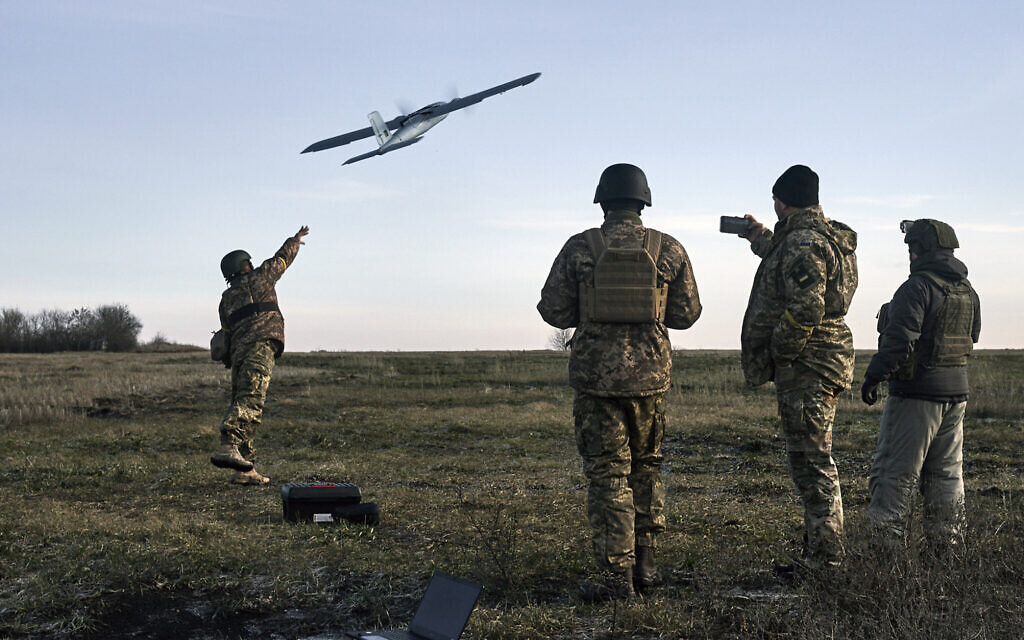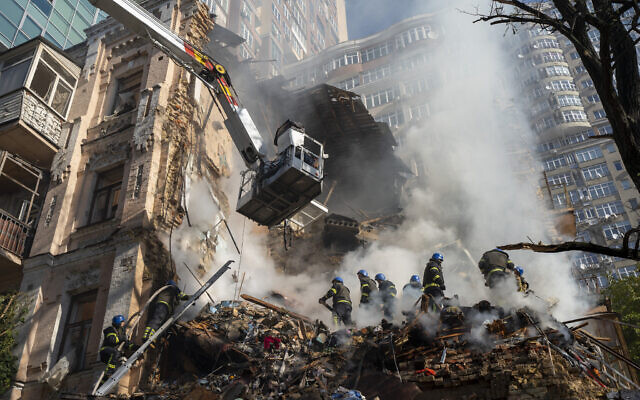My radio/TV program and my daily Substack newsletter, Hartmann Report, together are a small business. The only way I can increase my income from that business is by increasing the advertising revenue to the show, getting more people signed up for the newsletter, or both.
Build the business, in other words. Do the hard work every day. Keep my “customers” informed and thus happy: add value through research and share what I learn along the way.
It used to be that way with big business as well — companies grew in value because of good management and continual reinvestment in people, facilities, and product — until Ronald Reagan adopted neoliberalism and rewrote the rules of business.
Southwest Airlines passengers, for example, are today lamenting lost time with loved ones, lost luggage, and lost money spent on hotels, airline reroutes, and rental cars.
They missed weddings and funerals, spending time with family, and some confronted life-threatening situations as luggage-packed medications went missing and dialysis appointments had to be skipped.
All, apparently, so senior executives at Southwest and their morbidly rich investor cronies could get billions richer.
Here’s how it works.
If you’re the CEO of Southwest Airlines, or most any publicly traded corporation, there are two main ways you can increase your own compensation. They are:
1. Build the company: Invest in workers and technology. Open new routes. Provide better service to passengers. Upgrade your planes so people will want to fly with you. Pay your people better to build employee retention.
2. Use company profits to buy back and retire Southwest stock.
According to corporate watchdog Accountable.US, most of the evidence suggests the immediate predecessor to Southwest’s new CEO chose door number two as often as possible.
How the stock buyback scam works
But how and why does it happen that CEOs and senior executives make a pile of money when they direct their own corporation to buy back its stock out of the marketplace?
And how did this manipulation of stock prices ever get decriminalized after being illegal for a half-century?
Imagine you’re the CEO of Acme Airlines, a company valued at $10 billion. The company has issued a billion shares of stock that are currently trading at $10 a share ($10 x 1 billion shares = $10 billion).
As the CEO, you’re not only paid a salary, you also have the two typical forms of “stock incentives” modern corporations give their senior executives.
The first is “performance compensation,” meaning as the price of the stock goes up you get bonuses and/or an increase in your pay. The second is that you’re partly compensated with stock or stock options (the right to buy stock at a predetermined typically low price).
If you can increase the share price of Acme Airline’s stock, you not only get a big bonus for hitting your “performance” target, but the stock you hold or can buy at a fixed (lower) price also increases in value. You get rich(er)!
But let’s also say that you’re not interested in building Acme as a way of increasing the stock price: that’s a lot of work and takes years. You want big bucks fast.
So, you simply direct your company to go into the marketplace, to the stock exchange where Acme is traded, and buy up, say, a hundred million shares.
The company is still worth $10 billion, the value of all the planes, landing slots, goodwill, corporate buildings, and assets: none of that has changed.
You haven’t added a single customer or paid a single flight attendant, mechanic, gate agent, or pilot an extra penny. You haven’t improved service or widened the seats in the planes to get in new customers. All you’ve done is use $1 billion in company profits to buy a hundred million shares at $10 each and “retire” them.
But now that the company has bought and retired a hundred million shares, instead of there being a billion shares in circulation there are only 900 million, even though the company is still worth just $10 billion.
As a result of your directing Acme to do that “share buyback,” every share that still exists is worth roughly 10% more because there are 10% fewer of them.
Which means the piles of shares you’ve gotten in compensation are now worth 10% more, too. And because the stock price went up, you’ll be getting a nice “performance” bonus at the year’s end.
This was once a crime – and should be now
This used to be a crime called “stock price manipulation” and was one of President Franklin D. Roosevelt’s and Congress’ early targets when they went after the Wall Street crooks who brought us the Republican Great Depression of the 1930s.
Congress created the Securities and Exchange Commission (SEC) in 1934 and FDR put Joe Kennedy (JFK’s father) in charge of it; Kennedy ironically told my old friend the late Gloria Swanson that he was chosen because, she told me, FDR had wisecracked that, “It takes a crook to catch a crook.”
Kennedy, knowing how the game worked, outlawed stock buybacks as one of his first official acts.
But in 1982 President Reagan endorsed this very form of corporate corruption as part of his new neoliberal Reaganomics agenda, decriminalizing it for the first time in almost a half-century.
Lest you think it improbable that modern CEOs would do this, as it’s so obviously corrupt and harmful to the company itself, consider this headline from the corporate watchdog group Accountable.US:
“Southwest Cancellation Crisis Follows Execs’ Choice to Reward $5.6B to Shareholders Instead of Investing in Infrastructure”
As their press release lays out:
“Government watchdog Accountable.US called the airline’s cancellation crisis a problem of its own making after slashing its workforce by over 1,400 in 2021 and choosing to spend $5.6 billion on stock buybacks in the 3 years leading up to the pandemic rather than making investments in infrastructure to be better prepared for extreme weather events like this week…”
This Reaganomics neoliberalism scam has made America’s corporate CEOs and stock speculators among the wealthiest people in the world, while keeping down wages and benefits for everybody else. It’s hurt the competitiveness of American business.
It started with Reagan’s putting John Shad— the Vice Chairman of the monster investment house E.F. Hutton — in charge of the SEC, which regulates monster investment houses.
Shad wasted no time in deregulating stock buybacks, instituting in 1982 what’s now known as “Rule 10b-18” that made stock buybacks explicitly legal for the first time since 1934.
Since then, share buybacks have become the most personally profitable business scam CEOs and senior executives can run against their own employees, companies, and communities.
When Reagan and Shad made this change in 1982, the average compensation of CEOs was around 30 times that of their average employee. CEO’s often lived in the same communities as their workers, or in a just slightly more upscale part of town.
Today CEO compensation is between 254 and 1000 times the average employee, depending on the industry, and CEOs live in palatial estates with servants’ quarters, yachts, and private jets; much of that increase in their annual income is the result of their companies’ repeatedly executing stock buybacks over the past 40 years.
Corporate CEOs call this “maximizing shareholder value” and claim it’s how capitalism is supposed to work.
As more and more CEOs got in on the scam since Reagan legalized it in the 1980s, it’s come to account for much of the 40-year explosion in the price of publicly traded stocks.
Investors don’t complain because they’re making out well, too (and 84 percent of all stock in America is owned by the top 10 percent).
How the share buyback scam hurts Americans
It’s also why so much of America’s corporate infrastructure is rotting, from leaking methane from oil rigs to toxic spills from chemical factories to industrial waste being discharged into our environment instead of being cleaned up.
After all, why spend money on improving the company — or even on routine maintenance and safety — when you can personally cash in just as effectively by simply using your company’s revenues to engineer a stock buyback scheme every year?
As William Lazonick wrote for The Hill in 2018:
“Most recently, from 2007 through 2016, stock repurchases by 461 companies listed on the S&P 500 totaled $4 trillion, equal to 54 percent of profits. … Indeed, top corporate executives are often willing to incur debt, lay off employees, cut wages, sell assets, and eat into cash reserves to ‘maximize shareholder value.’”
You’d think that if a company’s stock was going up in value that would indicate it is doing well and could even pay its employees better.
In fact, the CEOs of companies need cash to do these buybacks, and to get that cash they often lay off workers and even cut back on their main business just to enrich themselves and their senior executives.
As Emily Stewart wrote that same year for Vox:
“The thing is, when companies are investing in stock buybacks and dividends, they’re spending money they could use on something else.
“The Roosevelt Institute in May released a report estimating that Walmart, for example, could boost hourly wages to more than $15 an hour with the $20 billion it was using for a buyback. A separate study from the Roosevelt Institute released in July found that companies spent nearly 60 percent of net profits on buybacks from 2015 to 2017.
“It estimated that with the money allocated to buybacks, companies such as Lowes, CVS, and Home Depot could give each of their workers a raise of at least $18,000 a year [on top of their current income!].
“Harley-Davidson in February announced a nearly $700 million stock buyback plan just days after saying it would close a plant in Kansas City. Wells Fargo is spending $25 billion on buybacks and is at the same time laying off workers in multiple states.”
Share buybacks have replaced growing a business as the main way CEOs jack up their compensation to buy a new mega-yacht or ski chalet in Switzerland. And its just as much of a scam today, and just as destructive to working people and our nation, as it was in 1929 when it helped crash the market.
Senators Bernie Sanders and Elizabeth Warren have been shouting about this from the rooftops for decades. Hillary Clinton brought it up in her 2016 campaign for president, something that no doubt cost her some CEO support.
At the time, Financial Times US National Editor Ed Luce wrote, in an article titled Hillary’s War on Quarterly Capitalism:
“The case for reforming shareholder capitalism is strong. The level of US investment [in actual business activity] is at its lowest since 1947. Last year, according to Goldman Sachs, S&P 500 companies spent more than $500bn on share buybacks. This year it is expected to hit $600bn.”
That was in 2015. Just so far this year:
+ Macys bought back 28.9% of their shares spending $2 billion they could have otherwise used to expand the business or raise workers’ pay.
+ Chesapeake Energy bought back 20.6% using $2 billion.
+ Diamondback Energy spent $4 billion to buy back 17.9 percent of their own shares.
+ For Morgan Stanley it was 14.8% of shares at a cost to the company of $20 billion.
The entire list — hundreds of billions in share buybacks just this year — is on this Marketbeat site.
When the biggest oil companies in America reported record profits this year, ripping off American drivers with sky-high gas prices, Reuters reported on April 29:
“Exxon earlier this year more than doubled its projected buyback program to $30 billion through 2022 and 2023. Shell said it would buy back $6 billion in shares in the current quarter, while Chevron boosted its annual buyback plans to a range of $10 billion to $15 billion, up from $5 billion to $10 billion.
“Exxon shares rose 4.6% to $96.93. Chevron shares rose almost 9%, closing at $163.78.”
CNBC reports:
“Apple started to pay quarterly dividends and repurchase its shares in March 2012. Since then and through last summer, Apple has spent over $467 billion on buybacks, according to S&P Global Market Intelligence, which calls the iPhone maker the ‘poster child’ for share buybacks.”
Facebook, which apparently doesn’t have enough cash to hire people to keep Nazis off their platform, has made its top stockholder, Mark Zuckerberg, the richest millennial in America in part through share buybacks, announcing in their third quarter 2021 earnings report:
“We repurchased $14.37 billion of our Class A common stock in the third quarter and had $7.97 billion remaining on our prior share repurchase authorization as of September 30, 2021. We also announced today a $50 billion increase in our share repurchase authorization.”
Progressives Try to Stop the Scam
Democratic politicians have been working for years to try to end this corrosive practice. Senator Tammy Baldwin wrote in a 2015 letter to the SEC’s chair:
“Stock buybacks use profits to purchase a company’s own stock instead of investing in the worker training, research, or innovation necessary to promote long-term growth. … In the past, this money went to productive investments in the form of higher wages, research and development, training, or new equipment. Today, cash is being extracted from companies and placed on the sidelines. Buybacks are now undermining the stock market’s role in capital formation.”
Senator Elizabeth Warren noted:
“Buybacks create a sugar high for the corporations. It boosts prices in the short run, but the real way to boost the value of a corporation is to invest in the future, and they are not doing that.”
In 2019, Senators Bernie Sanders and Chuck Schumer co-authored an article for The New York Times in which they told America:
“Between 2008 and 2017, 466 of the S&P 500 companies spent around $4 trillion on stock buybacks, equal to 53 percent of profits. An additional 40 percent of corporate profits went to dividends. When more than 90 percent of corporate profits go to buybacks and dividends, there is reason to be concerned.
“First, stock buybacks don’t benefit the vast majority of Americans. That’s because large stockholders tend to be wealthier. Nearly 85 percent of all stocks owned by Americans belong to the wealthiest 10 percent of households. Of course, many corporate executives are compensated through stock-based pay. So when a company buys back its stock, boosting its value, the benefits go overwhelmingly to shareholders and executives, not workers.”
Pointing out that share buybacks inflate the wealth of the top 10% of Americans who own most of this nation’s stocks — increasing inequality — while generally screwing the people who work for those companies, they added:
“[W]hen corporations direct resources to buy back shares on this scale, they restrain their capacity to reinvest profits more meaningfully in the company in terms of R&D, equipment, higher wages, paid medical leave, retirement benefits and worker retraining.”
Small businesses like mine and millions of others across this nation can’t engage in this sort of manipulation to seemingly pull money out of thin air. Large businesses shouldn’t be able to, either.
It’s time to declare the 42-year Reagan Revolution’s neoliberal experiment a failure, and outlaw the share buybacks that are one of its most visible markers. Joe Kennedy knew what he was talking about when he criminalized them, even if he was a crook.
A first step toward restoring vitality to America’s business sector and providing much-needed funds to return America to our position as the world’s innovator — with the world’s most prosperous middle class, as we were before Reagan’s introduction of neoliberalism — is to once again outlaw stock buybacks.











